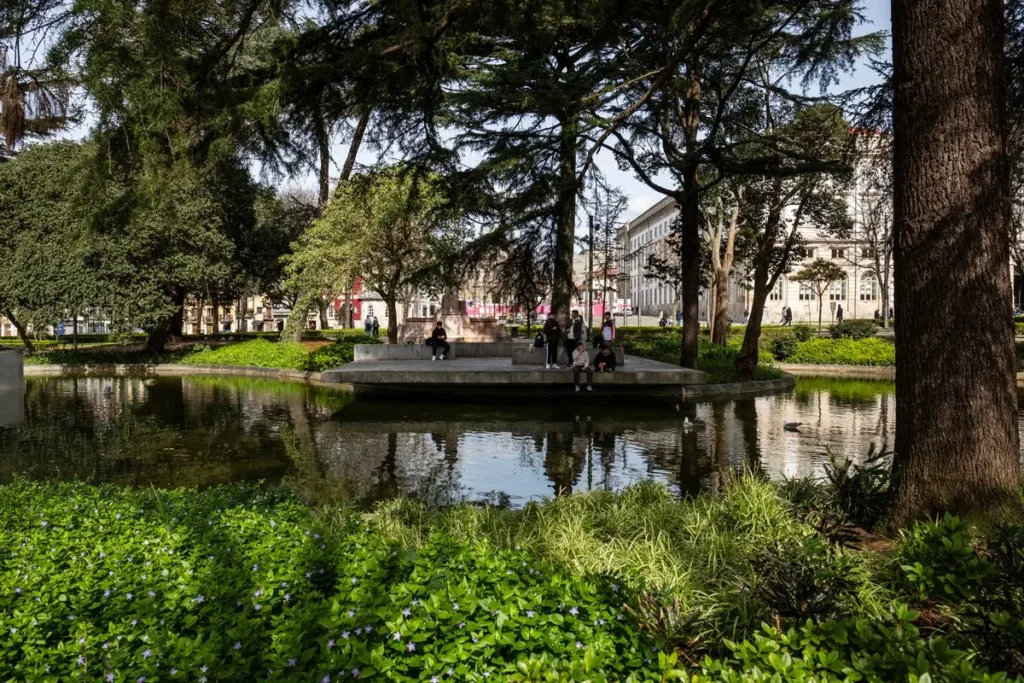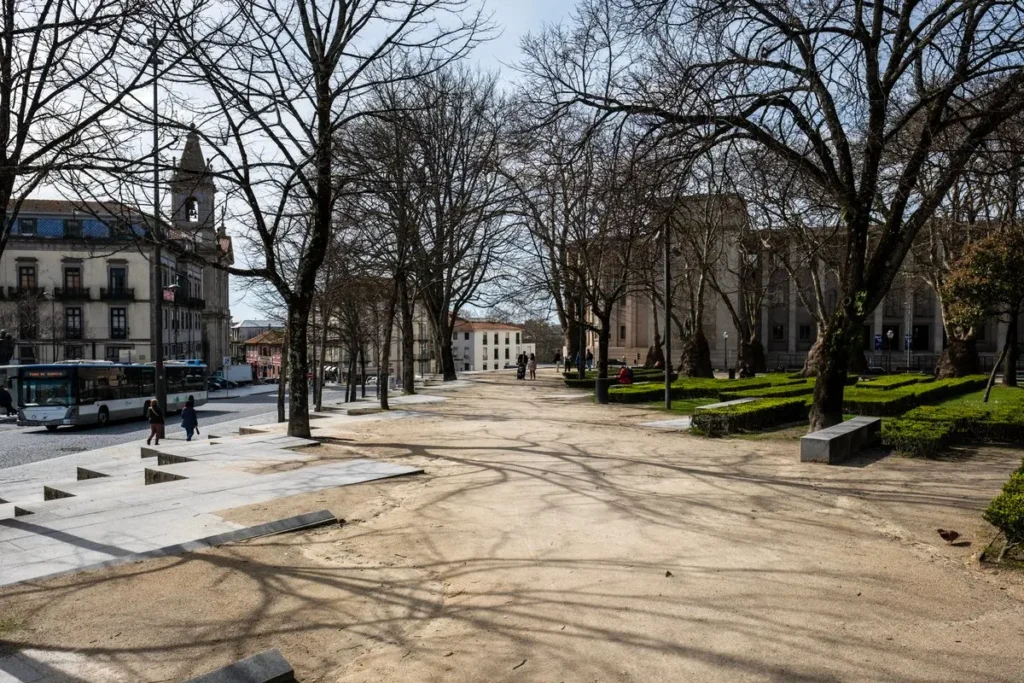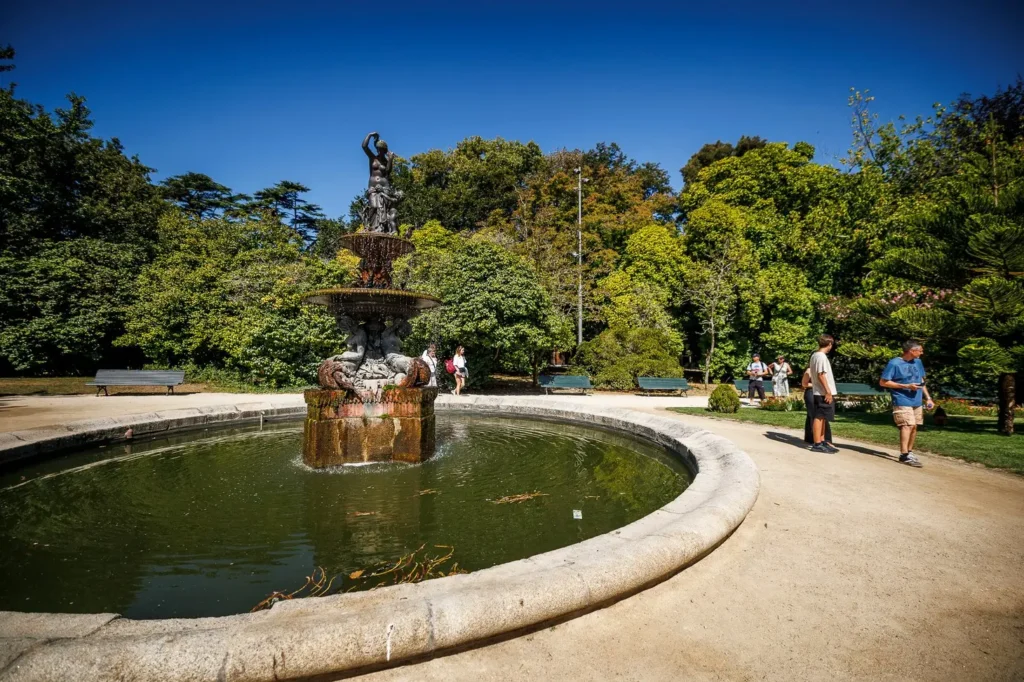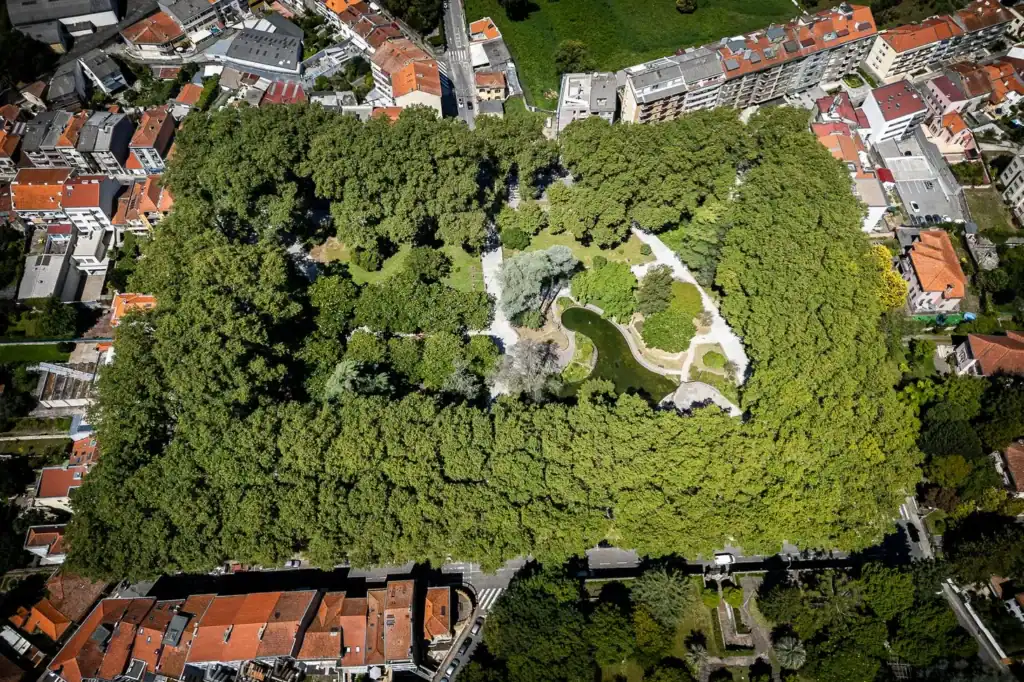Cordoaria Garden, also known as João Chagas Garden, is an example of how gardens represent an important natural-based solution in the urban environment. This green space, founded in 1865, combines historic elements with modern sustainable practices. Recently, it underwent an upgrade that included improving the rainwater drainage system, replacing the street lighting with more efficient options and restoring and waterproofing the existing pond. In addition, the replacement of pavements with gravel and the planting of new garden areas reinforce support for local biodiversity and promote rainwater infiltration, reducing the risk of flooding in the area.
This garden has around 160 trees, several of which are classified as being of public interest, namely the Alameda de Plátanos, the Passeio das Tílias, American Oaks (some centenarians), Araucarias, Cedars and Sequoias, which throughout the year present visitors with various colours and contrasts.
In addition to its environmental purpose, it also has an important social function, being a gateway garden for many visitors and the population, surrounded by a museum, university centres, a hospital and important tourist attractions in the city. It is a true green lung in the urban centre of Porto. Various cultural events and activities take place in this garden, combining nature with the various needs of the population in the area.





